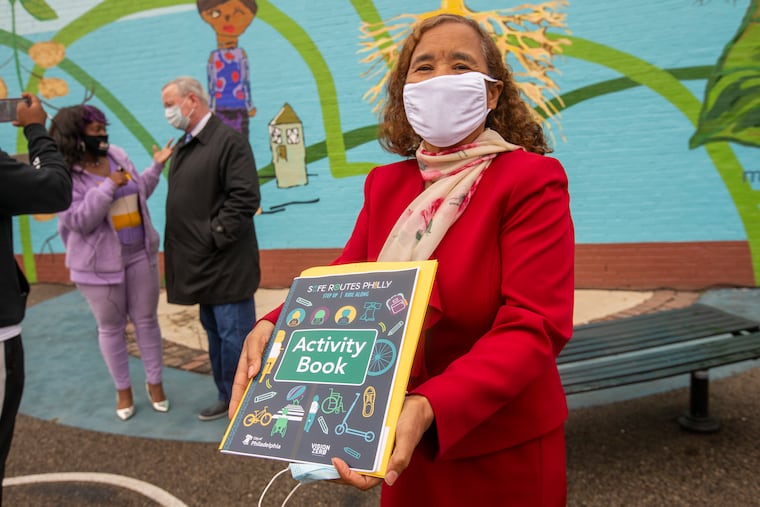Safe Routes Philly aims to teach students to walk and bike safely
“It could be your kid ... so just do us all a favor and take the foot off the gas just a little bit and look around you and care about other people for a change," Mayor Jim Kenney said.

To Deanda Logan, teaching her 500 students in prekindergarten through fifth grade how to be safe as pedestrians and on bikes is a “must do — not a filler.”
So she welcomed the launch of the city’s Safe Routes Philly program Monday in the schoolyard of Cramp Elementary, the Fairhill school where Logan is principal. The initiative, one prong of the city’s Vision Zero strategy to reduce the number of traffic-related deaths to zero by 2030, aims to shape safe transportation attitudes and practices from the earliest ages.
» READ MORE: Facing a 'horrific' year for traffic deaths, there's plenty of work ahead as city releases Vision Zero
Safe Routes Philly includes formal curricula, staff development, and other resources for elementary and high school students and families and will be offered to schools around the city, Mayor Jim Kenney and Superintendent William R. Hite Jr. said at a news conference announcing the program. It will also include organized walking and biking programs and a push to get more students walking and biking to school.
The resources will be available to students learning in buildings — by the end of the month, children in prekindergarten through fifth grade and sixth through eighth graders with intense special needs will be eligible for in-person learning — and the vast majority of students still learning remotely.
Kenney said youth safety was the highest priority of his administration but focused his message on aggressive city drivers: “Just gunning it and going crazy, moving lane to lane, not signaling, running heavy on big streets and small streets.”
“Just slow down,” the mayor said. “It could be your kid. It could be your brother or sister, it could be your niece or nephew, so just do us all a favor and take the foot off the gas just a little bit and look around you and care about other people for a change.”
City Councilmember Maria Quiñones-Sánchez said the Safe Routes Philly work was “generational changing.”
Cramp Elementary sits in the middle of two “neighborhood slow zones” designated under Vision Zero. One is in Fairhill, bounded by North Second and Fifth Streets and West Allegheny and Glenwood Avenues.
The second lies in the Willard neighborhood in Kensington, between Somerset Street and Allegheny Avenue and Kensington and Frankford Avenues.
Neighborhood slow zones aim to make drivers more careful in residential areas by using “traffic calming” design elements, such as dropping the speed limit to 20 mph; speed cushions made of asphalt or rubber; deliberately engineered curves in the roadway; or roundabouts.
The idea, part of the complete streets movement, is to make walking and bicycling, as well as driving, safer.
Joe Ciervo, Cramp’s longtime physical education teacher, has been embedding lessons about pedestrian and bike safety and even the importance of not littering into the curriculum for all grade levels since 2014. He’s a cheerleader for the work and for the movement.
“I think it’s important for the young kids to learn as they’re walking with their parents, and then with big brothers and sisters and eventually by themselves to school all the dangers of the neighborhood, where to cross, at the intersection, not to cross in the middle of the block, to look both ways in between the cars,” Ciervo said. “It’s worked out pretty well.”